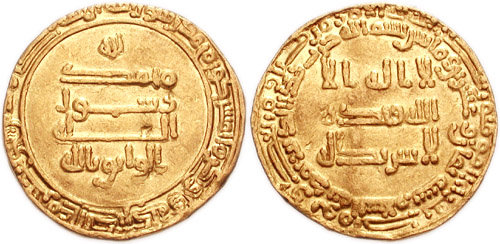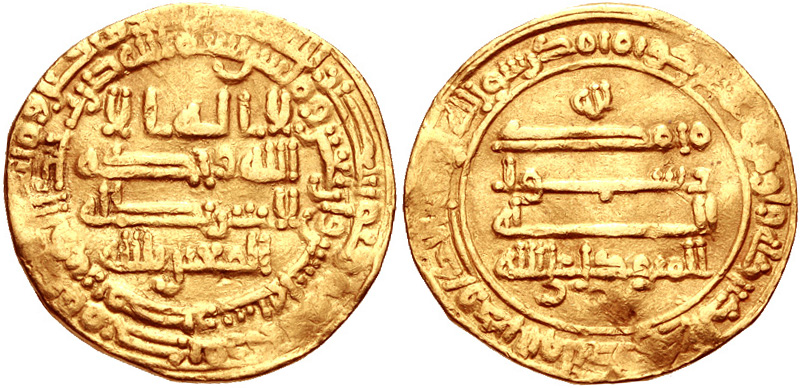|
Shakiriyya
The ''shākiriyya'' were a regular cavalry regiment of the Abbasid Caliphate in the "Samarra period" in the 9th century. Probably of Khurasani and Iranian origin, they were rivals of the Turkish guard, and played a major role in the court conflicts that marked the decade of the "Anarchy at Samarra" in the 860s. Origin The term derives from the Persian ''chākir'', "household servant", later also with the meaning of "bodyguard". The term appears in the Umayyad period, but exclusively for the native Iranian armed retinues of Transoxianian potentates, both Arabs and non-arabs. The term vanishes from the sources after the Abbasid Revolution, and reappears only in a letter by the Khurasani Iranian noble Tahir ibn Husayn to Caliph al-Ma'mun (), during civil war of the Fourth Fitna. It then appears as a distinct group in 839/840, in al-Tabari's history of the reign of al-Mu'tasim (). By the reign of al-Wathiq, but likely already during the reign of al-Mu'tasim, they had been formed i ... [...More Info...] [...Related Items...] OR: [Wikipedia] [Google] [Baidu] |
Jund
Under the early Caliphates, a ''jund'' ( ar, جند; plural ''ajnad'', اجناد) was a military division, which became applied to Arab military colonies in the conquered lands and, most notably, to the provinces into which Greater Syria (the Levant) was divided. ''Jund'' later acquired various meanings throughout the Muslim world. Origin The term ''jund'' derives from Parthian or Iranian word of "Gund" which was later on adopted by Islamic armies after the conquest of Iran. Today, "Gund" still refers to "town, village" as well as gathering (military) in Kurdish which was passed to Arabic with similar meaning of a group of supporters (also could refer to a group in general like in a city) ''Lisan al-Arab'' , and appears in the ''Quran'' to designate an armed troop. Under the Umayyad Caliphate it came to be applied in a more technical sense to "military settlements and districts in which were quartered Arab soldiers who could be mobilized for seasonal campaigns or for more pro ... [...More Info...] [...Related Items...] OR: [Wikipedia] [Google] [Baidu] |
Abbasid Samarra
Samarra is a city in central Iraq, which served as the capital of the Abbasid Caliphate from 836 to 892. Founded by the caliph al-Mu'tasim, Samarra was briefly a major metropolis that stretched dozens of kilometers along the east bank of the Tigris, but was largely abandoned in the latter half of the 9th century, especially following the return of the caliphs to Baghdad. Due to the relatively short period of occupation, extensive ruins of Abbasid Samarra have survived into modern times. The layout of the city can still be seen via aerial photography, revealing a vast network of planned streets, houses, palaces and mosques. Studies comparing the archeological evidence with information provided by Muslim historians have resulted in the identification of many of the toponyms within the former city. The archeological site of Samarra was named by UNESCO as a World Heritage Site in 2007, calling it "the best-preserved plan of an ancient large city." The modern city bearing the same nam ... [...More Info...] [...Related Items...] OR: [Wikipedia] [Google] [Baidu] |
Al-Wathiq
Abū Jaʿfar Hārūn ibn Muḥammad ( ar, أبو جعفر هارون بن محمد المعتصم; 17 April 812 – 10 August 847), better known by his laqab, regnal name al-Wāthiq bi’llāh (, ), was an Abbasid caliph who reigned from 842 until 847 AD (227–232 AH in the Islamic calendar). Al-Wathiq is described in the sources as well-educated, intellectually curious, but also a poet and a drinker, who enjoyed the company of poets and musicians as well as scholars. His brief reign was one of continuity with the policies of his father, al-Mu'tasim, as power continued to rest in the hands of the same officials whom al-Mu'tasim had appointed. The chief events of the reign were the suppression of revolts: Bedouin rebellions occurred in Bilad al-Sham, Syria in 842, the Hejaz in 845, and the Yamamah in 846, Arminiya, Armenia had to be pacified over several years, and above all, an abortive uprising took place in Baghdad itself in 846, under Ahmad ibn Nasr al-Khuza'i. The latter w ... [...More Info...] [...Related Items...] OR: [Wikipedia] [Google] [Baidu] |
Donative
The ''donativum'' (plural ''donativa'') was a gift of money by the Roman emperors to the soldiers of the Roman legions or to the Praetorian Guard. The English translation is ''donative''. The purpose of the ''donativa'' varied. Some were expressions of gratitude for favors received, and others outright bribery for favours expected in return. ''Donativa'' were normally rendered at the beginning of each new emperor's reign. During the 2nd and 3rd centuries, that form of bribery became a crucial part of any successful ruler in Rome. Such was the case with many of the soldier-emperors from 235 to 248. The Praetorian Guard, intimate to the emperor's person, was an even greater threat to security. The cohorts stationed in Rome were difficult to appease and quick to assassinate. The ''donativum'' thus provided a significant way to purchase the Guard's support and loyalty. Emperor Augustus bequeathed the Praetorian Guard a substantial sum in his will, but it was not until the reign of ... [...More Info...] [...Related Items...] OR: [Wikipedia] [Google] [Baidu] |
Al-Mutawakkil
Abū al-Faḍl Jaʿfar ibn Muḥammad al-Muʿtaṣim bi-ʾllāh ( ar, جعفر بن محمد المعتصم بالله; March 822 – 11 December 861), better known by his regnal name Al-Mutawakkil ʿalā Allāh (, "He who relies on God") was the tenth Abbasid caliph. He succeeded his brother, al-Wathiq, and is known for expanding the empire to its maximum extent. He was deeply religious, and is remembered for discarding the Muʿtazila, ending the Mihna (a period of persecution of Islamic scholars), and releasing Ahmad ibn Hanbal. He is also known for his tough rule, especially with respect to non-Muslim subjects. He was assassinated on 11 December 861 by the Turkic guard with the support of his son, al-Muntasir, marking the beginning of the period of civil strife known as the "Anarchy at Samarra". Early life Al-Mutawakkil was born on February/March 822 to the Abbasid prince Abu Ishaq Muhammad (the future al-Mu'tasim) and a slave concubine from Khwarazm called Shuja. His ... [...More Info...] [...Related Items...] OR: [Wikipedia] [Google] [Baidu] |
Abna Al-dawla
The ''abnāʾ al-dawla'' ( ar, أبناء الدولة, meaning "sons of the regime/dynasty"), often simply " the ''Abnāʾ''", is a term for the Khorasani Arabs who had participated in the Abbasid Revolution of 749–750 and their descendants, who settled in Baghdad and Iraq. They became the ruling elite of the Abbasid Caliphate and formed the mainstay of the caliphal army. However, the term appears rarely in the sources until the time of the Fourth Fitna civil war in the 810s, when it is applied to the Khurasanis of Baghdad, who overwhelmingly supported Caliph al-Amin against his brother al-Ma'mun. The terms ''ahl Khurāsān'' ("people of Khurasan") and ''abnāʾ ahl Khurāsān'' ("sons of the people of Khurasan") are more frequently used for the Khurasanis who formed the mainstay of the Abbasid regime in general. Following al-Ma'mun's victory in the civil war, the ''abnāʾ al-dawla'' were largely replaced by the latter's Persian followers, and under his successor al-Mu'tasim ... [...More Info...] [...Related Items...] OR: [Wikipedia] [Google] [Baidu] |
Hugh N
Hugh may refer to: *Hugh (given name) Noblemen and clergy French * Hugh the Great (died 956), Duke of the Franks * Hugh Magnus of France (1007–1025), co-King of France under his father, Robert II * Hugh, Duke of Alsace (died 895), modern-day France * Hugh of Austrasia (7th century), Mayor of the Palace of Austrasia * Hugh I, Count of Angoulême (1183–1249) * Hugh II, Count of Angoulême (1221–1250) * Hugh III, Count of Angoulême (13th century) * Hugh IV, Count of Angoulême (1259–1303) * Hugh, Bishop of Avranches (11th century), France * Hugh I, Count of Blois (died 1248) * Hugh II, Count of Blois (died 1307) * Hugh of Brienne (1240–1296), Count of the medieval French County of Brienne * Hugh, Duke of Burgundy (d. 952) * Hugh I, Duke of Burgundy (1057–1093) * Hugh II, Duke of Burgundy (1084–1143) * Hugh III, Duke of Burgundy (1142–1192) * Hugh IV, Duke of Burgundy (1213–1272) * Hugh V, Duke of Burgundy (1294–1315) * Hugh Capet (939–996), King of France * ... [...More Info...] [...Related Items...] OR: [Wikipedia] [Google] [Baidu] |
Medieval Egypt
Following the Muslim conquest of Egypt, Islamic conquest in 639, Lower Egypt was ruled at first by governors acting in the name of the Rashidun Caliphs and then the Umayyad Caliphs in Damascus, but in 747 the Umayyads Abbasid Revolution, were overthrown. Throughout Islamic rule, Al-Askar, Askar was named the capital and housed the ruling administration. The conquest led to two separate provinces all under one ruler: Upper Egypt, Upper and Lower Egypt. These two very distinct regions were governed by the military and followed the demands handed down by the governor of Egypt and imposed by the heads of their communities. Egypt was ruled by many dynasties from the start of Islamic control in 639 until the early 16th century. The Umayyad period lasted from 658 to 750. The Abbasid period which came after was much more focused on taxes and centralizing power. In 868, the Tulunids, ruled by Ahmad ibn Tulun, expanded Egypt's territory into the Levant. He would rule until his death in 884 ... [...More Info...] [...Related Items...] OR: [Wikipedia] [Google] [Baidu] |
Mecca
Mecca (; officially Makkah al-Mukarramah, commonly shortened to Makkah ()) is a city and administrative center of the Mecca Province of Saudi Arabia, and the Holiest sites in Islam, holiest city in Islam. It is inland from Jeddah on the Red Sea, in a narrow valley above sea level. Its last recorded population was 1,578,722 in 2015. Its estimated metro population in 2020 is 2.042million, making it the List of cities in Saudi Arabia by population, third-most populated city in Saudi Arabia after Riyadh and Jeddah. Pilgrims more than triple this number every year during the Pilgrimage#Islam, pilgrimage, observed in the twelfth Islamic calendar, Hijri month of . Mecca is generally considered "the fountainhead and cradle of Islam". Mecca is revered in Islam as the birthplace of the Prophets and messengers in Islam, Islamic prophet Muhammad. The Hira cave atop the ("Mountain of Light"), just outside the city, is where Muslims believe the Quran was first revealed to Muhammad. Vis ... [...More Info...] [...Related Items...] OR: [Wikipedia] [Google] [Baidu] |
Al-Jazira (caliphal Province)
Al-Jazira ( ar, الجزيرة), also known as Jazirat Aqur or Iqlim Aqur, was a province of the Rashidun, Umayyad and Abbasid caliphates, spanning at minimum most of Upper Mesopotamia (al-Jazira proper), divided between the districts of Diyar Bakr, Diyar Rabi'a and Diyar Mudar, and at times including Mosul, Arminiya and Adharbayjan as sub-provinces. Following its conquest by the Muslim Arabs in 639/40, it became an administrative unit attached to the larger district of Jund Hims. It was separated from Hims during the reigns of caliphs Mu'awiya I or Yazid I and came under the jurisdiction of Jund Qinnasrin. It was made its own province in 692 by Caliph Abd al-Malik. After 702, it frequently came to span the key districts of Arminiya and Adharbayjan along the Caliphate's northern frontier, making it a super-province. The predominance of Arabs from the Qays/Mudar and Rabi'a groups made it a major recruitment pool of tribesmen for the Umayyad armies and the troops of the Jazira pla ... [...More Info...] [...Related Items...] OR: [Wikipedia] [Google] [Baidu] |




